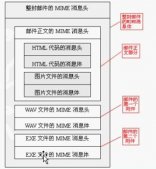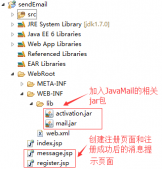standardengine[tomcat].standardhost[localhost]的启动与standardengine不在同一个线程中,它的start:
// start our child containers, if any
container children[] = findchildren();
list<future<void>> results = new arraylist<>();
for (int i = 0; i < children.length; i++) {
results.add(startstopexecutor.submit(new startchild(children[i])));
}
boolean fail = false;
for (future<void> result : results) {
try {
result.get();
} catch (exception e) {
log.error(sm.getstring("containerbase.threadedstartfailed"), e);
fail = true;
}
}
if (fail) {
throw new lifecycleexception(
sm.getstring("containerbase.threadedstartfailed"));
}
private static class startchild implements callable<void> {
private container child;
public startchild(container child) {
this.child = child;
}
@override
public void call() throws lifecycleexception {
child.start();
return null;
}
}
这个start流程中,initinternal方法是containerbase的代码,还是那个初始化startstopexecutor的,线程名例如thread[localhost-startstop-1,5,main],这次是用来初始化host的子容器的,然后是standardhost中的startinternal方法,主要是注册了一个errorvalue,如果现有的pipeline中没有errorvalue,则反射创建org.apache.catalina.valves.errorreportvalve实例,并加入pipeline中,容器pipeline加入value时会发布一个container.add_valve_event事件,与engine一样,之后进入containerbase的startinternal,但是这次realm是null不需要启动,然后findchildren出standardengine[tomcat]. standardhost [localhost].standardcontext[],然后同样新开个线程new startchild,start同样是上面的代码,需要特别说明的是,这次before_init的事件有监听的了,fixcontextlistener,disablepersistsessionlistener,memoryleaktrackinglistener;fixcontextlistener监听的处理,会加入一个用于不做用户身份认证的安全检查的value:
context context = (context) event.getlifecycle();
if (event.gettype().equals(lifecycle.configure_start_event)) {
context.setconfigured(true);
}
// loginconfig is required to process @servletsecurity
// annotations
if (context.getloginconfig() == null) {
context.setloginconfig(
new loginconfig("none", null, null, null));
context.getpipeline().addvalve(new nonloginauthenticator());
}
disablepersistsessionlistener监听只处理start事件,所以这里只判断了一下发现不是就出去了,其实这里可以思考下,有没有更好的办法,让监听不只是广播方式,能不能用订阅方式,先不细想了,接着看代码,memoryleaktrackinglistener只监听了after_start事件,这步同样什么都没做。
于是来到了standardcontext的initinternal,它的super.initinternal又是一个startstopexecutor,containerbase的super.initinternal就不再说了,发送j2ee.object.created消息:
notification notification = new notification("j2ee.object.created",
this.getobjectname(), sequencenumber.getandincrement());
broadcaster.sendnotification(notification);
notification是eventobject的子类,代表由mbean发出的通知,mbean server发出的通知会包含发出的mbean的引用,如果mbean注册了监听,可以通过object name或引用获取消息发出者,官方建议使用object name;sendnotification方法:
/**
* sends a notification.
*
* if an {@code executor} was specified in the constructor, it will be given one
* task per selected listener to deliver the notification to that listener.
*
* @param notification the notification to send.
*/
public void sendnotification(notification notification) {
if (notification == null) {
return;
}
boolean enabled;
for (listenerinfo li : listenerlist) {
try {
enabled = li.filter == null ||
li.filter.isnotificationenabled(notification);
} catch (exception e) {
if (logger.debugon()) {
logger.debug("sendnotification", e);
}
continue;
}
if (enabled) {
executor.execute(new sendnotifjob(notification, li));
}
}
}
发完消息就转变状态为初始化完成,因为监听器是注册在context容器上的,于是after_init事件又触发了那三个监听器,这一阶段监听器什么都没处理走了下过场而已;before_start同走过场;然后standardcontext的startinternal方法,发布了个j2ee.state.starting消息object name为tomcat:j2eetype=webmodule,name=//localhost/,j2eeapplication=none, j2eeserver=none;setconfigured(false)还没有正确的配置;设置webresourceroot,webresourceroot提供整个应用资源处理类的各种方法,内嵌用的实现类是standardroot,set的过程中加了写锁:
try {
setresources(new standardroot(this));
} catch (illegalargumentexception e) {
log.error(sm.getstring("standardcontext.resourcesinit"), e);
ok = false;
}
standardroot的属性allresources:
private final list<list<webresourceset>> allresources =
new arraylist<>();
{
allresources.add(preresources);
allresources.add(mainresources);
allresources.add(classresources);
allresources.add(jarresources);
allresources.add(postresources);
}
http://tomcat.apache.org/tomcat-8.0-doc/api/org/apache/catalina/webresourceroot.html有相关说明,我就不翻译了。
set之后就是启动resourcesstart,initinternal执行的是standardroot的initinternal方法,super.initinternal中依然是那两行代码,register(cache, getobjectnamekeyproperties() + ",name=cache")会发送mbeanservernotification. registration_notification通知,生成objectname这里cachejmxname是tomcat:type=webresourceroot,host=localhost,context=/,name=cache;registerurlstreamhandlerfactory里面的代码是tomcaturlstreamhandlerfactory.register()这行代码的注释说这是为了支持war包内的jar资源的。之后是循环上面的allresources,init里面加入的webresourceset,但是由于全都是空的,所以等于没执行,就不说了,回头再仔细看看什么情况下回不为空,还是内嵌的就是空的。createmainresourceset主要是设置个主目录,例如/tmp/tomcat-docbase.3031819619941848514.80,然后是各种资源该放在哪个子目录的一些设置代码;这次资源有一个了,所以可以有一个start了,dirresourceset的;super.initinternal()的super是abstractfileresourceset:
//-------------------------------------------------------- lifecycle methods
@override
protected void initinternal() throws lifecycleexception {
super.initinternal();
// is this an exploded web application?
if (getwebappmount().equals("")) {
// look for a manifest
file mf = file("meta-inf/manifest.mf", true);
if (mf != null && mf.isfile()) {
try (fileinputstream fis = new fileinputstream(mf)) {
setmanifest(new manifest(fis));
} catch (ioexception e) {
log.warn(sm.getstring("dirresourceset.manifestfail", mf.getabsolutepath()), e);
}
}
}
}
super.initinternal主要是对base目录进行了一些规范化处理,规范的方法主要是unixfilesystem中的canonicalize其中还使用expiringcache对路径做了缓存,另外还有在normalize方法中对路径中类似"\.."的部分做了处理。webappmount是web应用发布资源的位置,必须以‘/'开头,这里应该是通过它来判断不是war包部署的模式,然后由于manifest没找到,所以方法返回初始化完成,这个资源一路状态变化就启动完了。
回到standardroot,接下来是processwebinflib方法,代码很直观,不解释了:
private void processwebinflib() {
webresource[] possiblejars = listresources("/web-inf/lib", false);
for (webresource possiblejar : possiblejars) {
if (possiblejar.isfile() && possiblejar.getname().endswith(".jar")) {
createwebresourceset(resourcesettype.classes_jar,
"/web-inf/classes", possiblejar.geturl(), "/");
}
}
}
接下来也不解释:
// need to start the newly found resources
for (webresourceset classresource : classresources) {
classresource.start();
}
cache.enforceobjectmaxsizelimit是计算缓存限制的,详细的可以参考http://tomcat.apache.org/tomcat-8.0-doc/config/resources.html,至此standardroot的启动完成就只剩下改状态了。
回到standardcontext,因为classloader已经有了不需要new了;接着创建rfc6265cookieprocessor类型的cookieprocessor实例,关于rfc6265标准参考http://www.rfc-editor.org/rfc/rfc6265.txt;character set mapper因为已经初始化好了只判断了下;工作目录处理,先根据host和engine名生成路径如:work/tomcat/localhost/root,结合前面的base创建目录例如/tmp/tomcat.3726907762383543267.80/work/tomcat/localhost/root,然后初始化standardcontext中的applicationcontext类型可继承的全局变量context构造用参数是this(context = new applicationcontext(this)),返回new applicationcontextfacade(this);将上面的全路径设置给servletcontext.tempdir属性,并将这个属性设置为只读:
/**
* set an attribute as read only.
*/
void setattributereadonly(string name) {
if (attributes.containskey(name))
readonlyattributes.put(name, name);
}
之后是对扩展进行验证,这里说一下,standardcontext中不管是这里的获取资源还是之后的读取classloader都是加了读锁的:
// validate required extensions
boolean dependencycheck = true;
try {
dependencycheck = extensionvalidator.validateapplication
(getresources(), this);
} catch (ioexception ioe) {
log.error(sm.getstring("standardcontext.extensionvalidationerror"), ioe);
dependencycheck = false;
}
catalina.usenaming用于是否开启命名服务支持,开启了就会注册namingcontextlistener监听器:
if (!dependencycheck) {
// do not make application available if depency check fails
ok = false;
}
// reading the "catalina.usenaming" environment variable
string usenamingproperty = system.getproperty("catalina.usenaming");
if ((usenamingproperty != null)
&& (usenamingproperty.equals("false"))) {
usenaming = false;
}
if (ok && isusenaming()) {
if (getnamingcontextlistener() == null) {
namingcontextlistener ncl = new namingcontextlistener();
ncl.setname(getnamingcontextname());
ncl.setexceptiononfailedwrite(getjndiexceptiononfailedwrite());
addlifecyclelistener(ncl);
setnamingcontextlistener(ncl);
}
}
classloader oldccl = bindthread()里有个threadbindinglistener,不过因为webapplicationclassloader是null,所以等于没执行,返回的是null,里面的逻辑还不少,命名服务也没开contextbindings.bindthread于是也没执行。
old的没有,但是loader还是有的,到了loader的start了,主要要说的是webapploader的startinternal方法,classloader创建:
classloader = createclassloader(); classloader.setresources(context.getresources()); classloader.setdelegate(this.delegate);
buildclasspath的主要功能是遍历各个层次的classloader并将其中classpath的jar拼成一个字符串,例如
:/usr/lib/jvm/java-8-oracle/jre/lib/charsets.jar:/usr/lib/jvm/java-8-oracle/jre/lib/deploy.jar:/usr/lib/jvm/java-8-oracle/jre/lib/ext/cldrdata.jar...,是以':'作为分隔是因为我的开发环境是linux,在windows中应该是';':
while (loader != null) {
if (!buildclasspath(classpath, loader)) {
break;
}
loader = loader.getparent();
}
if (delegate) {
// delegation was enabled, go back and add the webapp paths
loader = getclassloader();
if (loader != null) {
buildclasspath(classpath, loader);
}
}
delegate之前提过了,是会向基loader类委托的;setclasspath的最后一句:servletcontext.setattribute(globals.class_path_attr, this.classpath)。
setpermissions方法,由于我这第一个判断就返回了,而且看上去代码也很直观,我就不说了:
private void setpermissions() {
if (!globals.is_security_enabled)
return;
if (context == null)
return;
// tell the class loader the root of the context
servletcontext servletcontext = context.getservletcontext();
// assigning permissions for the work directory
file workdir =
(file) servletcontext.getattribute(servletcontext.tempdir);
if (workdir != null) {
try {
string workdirpath = workdir.getcanonicalpath();
classloader.addpermission
(new filepermission(workdirpath, "read,write"));
classloader.addpermission
(new filepermission(workdirpath + file.separator + "-",
"read,write,delete"));
} catch (ioexception e) {
// ignore
}
}
for (url url : context.getresources().getbaseurls()) {
classloader.addpermission(url);
}
}
((lifecycle) classloader).start(),这个classloader是tomcatembeddedwebappclassloader走的是webappclassloaderbase中的start方法,这里因为是内嵌的版本(我没确认,猜测)所以也并没有加载到东西,所以也不细说了:
public void start() throws lifecycleexception {
state = lifecyclestate.starting_prep;
webresource classes = resources.getresource("/web-inf/classes");
if (classes.isdirectory() && classes.canread()) {
localrepositories.add(classes.geturl());
}
webresource[] jars = resources.listresources("/web-inf/lib");
for (webresource jar : jars) {
if (jar.getname().endswith(".jar") && jar.isfile() && jar.canread()) {
localrepositories.add(jar.geturl());
jarmodificationtimes.put(
jar.getname(), long.valueof(jar.getlastmodified()));
}
}
state = lifecyclestate.started;
}
然后生成objectname例如:tomcat:context=/,host=localhost,type=tomcatembeddedwebappclassloader,然后注册mbean:getmbeanserver().registermbean( mbean, oname);webapploader的start就没什么了,started之后就是设置了几个属性:
// since the loader just started, the webapp classloader is now
// created.
setclassloaderproperty("clearreferencesrmitargets",
getclearreferencesrmitargets());
setclassloaderproperty("clearreferencesstopthreads",
getclearreferencesstopthreads());
setclassloaderproperty("clearreferencesstoptimerthreads",
getclearreferencesstoptimerthreads());
setclassloaderproperty("clearreferenceshttpclientkeepalivethread",
getclearreferenceshttpclientkeepalivethread());
这里的unbindthread因为前面的bind几乎没做什么,所以什么也没做;接着的bindthread主要讲线程与classloader做了绑定: thread.currentthread().setcontextclassloader (webapplicationclassloader),至于threadbindinglistener.bind()由于threadbindinglistener用了个空实现,所以这里什么也没做。
接下来用读锁取到realm并start它;接下来发布configure_start事件,fixcontextlistener中执行了context.setconfigured(true)。
终于到了standardwrapper(standardengine[tomcat].standardhost[localhost].standardcontext[].standardwrapper[default])的start了,initinternal直接就是containerbase的初始化startstopexecutor,startinternal方法是发了个j2ee.state.starting的消息,objectname是tomcat:j2eetype=servlet, webmodule=//localhost/, name=default, j2eeapplication=none, j2eeserver=none,然后又到containerbase的startinternal,然而由于它没有子容器了,所以这里并没有startchild的任务产生;于是开始执行它的value,先start它的pipeline,startinternal方法依然是standardpipeline的,按顺序start,由于到这的时候一个都没有,所以执行的是basic的,standardwrappervalve的initinternal中只有一句注释:don't register this valve in jmx;startinternal的最后是threadstart,但由于backgroundprocessordelay是-1所以并没有启动背景线程;setavailable(0l)设置可用,它的说明 the date and time at which this servlet will become available (in milliseconds since the epoch), or zero if the servlet is available;然后发送一个消息j2ee.state.running,objectname是tomcat:j2eetype=servlet,webmodule=//localhost/,name=default,j2eeapplication=none,j2eeserver=none;
standardwrapper就启动完了,回到standardcontext,start它的pipeline;与standardwrapper的pipeline不同,它之前被注册过nonloginauthenticator,它的startinternal方法定义在authenticatorbase,方法中设置了jaspicappcontextid(例如:tomcat/localhost ),然后获取上级容器也就是host的pipeline中的所有value,并找到其中singlesignon类型的value,明显是用于单点登录的,我这里没有,于是又去找了上一级容器engine当然还是没有,于是就往下走了;实例化了一个standardsessionidgenerator,设置安全随机数生成算法我这里是sha1prng,生成器类名为null,生成器provider也是null,然后就是下一个value对象standardcontextvalve的start,只不过它的start是标准的什么额外事都没干,于是回到了standardcontext中。下面一段主要是执行了tomcatembeddedcontext中的setmanager方法:
@override
public void setmanager(manager manager) {
if (manager instanceof managerbase) {
((managerbase) manager).setsessionidgenerator(new lazysessionidgenerator());
}
super.setmanager(manager);
}
这里判断是true,lazysessionidgenerator整个的代码:
class lazysessionidgenerator extends standardsessionidgenerator {
@override
protected void startinternal() throws lifecycleexception {
setstate(lifecyclestate.starting);
}
}
tomcatembeddedcontext的super.setmanager(manager)的super是standardcontext,在写锁中执行的,spring中多数的set都是交换的方式,先set个old保存下来,然后判断新值和old是否相同,不相同用新的并将新值绑定容器,相同直接返回;getservletcontext().setattribute(globals.resources_attr, getresources())没什么好解释的;setnamingresources(new namingresourcesimpl());然后init这个namingresources,namingresourcesimpl的initinternal,在设置当前已知命名资源前设置resourcerequireexplicitregistration用于避免时序问题,重复注册是正常的,后面一段我不想解释:
for (contextresource cr : resources.values()) {
try {
mbeanutils.creatembean(cr);
} catch (exception e) {
log.warn(sm.getstring(
"namingresources.mbeancreatefail", cr.getname()), e);
}
}
for (contextenvironment ce : envs.values()) {
try {
mbeanutils.creatembean(ce);
} catch (exception e) {
log.warn(sm.getstring(
"namingresources.mbeancreatefail", ce.getname()), e);
}
}
for (contextresourcelink crl : resourcelinks.values()) {
try {
mbeanutils.creatembean(crl);
} catch (exception e) {
log.warn(sm.getstring(
"namingresources.mbeancreatefail", crl.getname()), e);
}
}
init之后是start,start中只发布了个configure_start事件。
setinstancemanager(new defaultinstancemanager(context, injectionmap, this, this.getclass().getclassloader())),instancemanager主要是用于创建和回收实例,然后绑定:
getservletcontext().setattribute(
instancemanager.class.getname(), getinstancemanager());
instancemanagerbindings.bind(getloader().getclassloader(), getinstancemanager());
还有:
getservletcontext().setattribute(
jarscanner.class.getname(), getjarscanner());
合并参数mergeparameters由于我这里是空的,所以什么也没做;然后遍历initializers并onstartup:

先是进入到tomcatstarter的onstartup,这里又是:
for (servletcontextinitializer initializer : this.initializers) {
initializer.onstartup(servletcontext);
}
先是执行:
private org.springframework.boot.web.servlet.servletcontextinitializer getselfinitializer() {
return new servletcontextinitializer() {
@override
public void onstartup(servletcontext servletcontext) throws servletexception {
selfinitialize(servletcontext);
}
};
}
embeddedwebapplicationcontext中的selfinitialize ,prepareembeddedwebapplicationcontext正常情况下先打一条日志initializing spring embedded webapplicationcontext然后servletcontext.setattribute(webapplicationcontext.root_web_application_context_attribute, this)然后将this绑定servletcontext,如果启动info级别日志,会打印类似这样的日志:root webapplicationcontext: initialization completed in 3150193 ms;然后new existingwebapplicationscopes,这玩意的注释说它允许与非嵌入式相同的方式注册作用域到applicationcontextinitializer,先执行了一个静态代码块:
static {
set<string> scopes = new linkedhashset<string>();
scopes.add(webapplicationcontext.scope_request);//request
scopes.add(webapplicationcontext.scope_session);//session
scopes.add(webapplicationcontext.scope_global_session);//global session
scopes = collections.unmodifiableset(scopes);
}
但是似乎在我这add白做了,因为构造函数中从bean工厂并没取到scope实例:
this.beanfactory = beanfactory;
for (string scopename : scopes) {
scope scope = beanfactory.getregisteredscope(scopename);
if (scope != null) {
this.scopes.put(scopename, scope);
}
}
真正注册作用域是在下一句webapplicationcontextutils.registerwebapplicationscopes(beanfactory, getservletcontext()):
beanfactory.registerscope(webapplicationcontext.scope_request, new requestscope());
beanfactory.registerscope(webapplicationcontext.scope_session, new sessionscope(false));
beanfactory.registerscope(webapplicationcontext.scope_global_session, new sessionscope(true));
if (sc != null) {
servletcontextscope appscope = new servletcontextscope(sc);
beanfactory.registerscope(webapplicationcontext.scope_application, appscope);
// register as servletcontext attribute, for contextcleanuplistener to detect it.
sc.setattribute(servletcontextscope.class.getname(), appscope);
}
beanfactory.registerresolvabledependency(servletrequest.class, new requestobjectfactory());
beanfactory.registerresolvabledependency(servletresponse.class, new responseobjectfactory());
beanfactory.registerresolvabledependency(httpsession.class, new sessionobjectfactory());
beanfactory.registerresolvabledependency(webrequest.class, new webrequestobjectfactory());
if (jsfpresent) {
facesdependencyregistrar.registerfacesdependencies(beanfactory);
}
registerresolvabledependency将类型与对应的装配对象注册进bean工厂。existingscopes.restore里的代码:
public void restore() {
for (map.entry<string, scope> entry : this.scopes.entryset()) {
if (logger.isinfoenabled()) {
logger.info("restoring user defined scope " + entry.getkey());
}
this.beanfactory.registerscope(entry.getkey(), entry.getvalue());
}
}
webapplicationcontextutils.registerenvironmentbeans(beanfactory, getservletcontext())把相应的变量key与值注册给bean工厂,如servletcontext、contextparameters和contextattributes;从bean工厂中获取所有org.springframework.boot.web.servlet.servletcontextinitializer类型的bean,如filterregistrationbean和dispatcherservletregistration然后add给servletcontextinitializerbeans实例的initializers;addadaptablebeans方法先从bean工厂中获取javax.servlet.multipartconfigelement类型的对象,然而javax.servlet.servlet没在bean工厂里找到,所以add什么也没做;javax.servlet.filter找到characterencodingfilter、hiddenhttpmethodfilter、httpputformcontentfilter、requestcontextfilter;servletlistenerregistrationbean.getsupportedtypes()取的是servletlistenerregistrationbean的supported_types,不过全都没找到,所以什么也没做:
static {
set<class<?>> types = new hashset<class<?>>();
types.add(servletcontextattributelistener.class);
types.add(servletrequestlistener.class);
types.add(servletrequestattributelistener.class);
types.add(httpsessionattributelistener.class);
types.add(httpsessionlistener.class);
types.add(servletcontextlistener.class);
supported_types = collections.unmodifiableset(types);
}
然后是对找到的进行排序:
list<servletcontextinitializer> sortedinitializers = new arraylist<servletcontextinitializer>();
for (map.entry<?, list<servletcontextinitializer>> entry : this.initializers
.entryset()) {
annotationawareordercomparator.sort(entry.getvalue());
sortedinitializers.addall(entry.getvalue());
}
this.sortedlist = collections.unmodifiablelist(sortedinitializers);
public static void sort(object[] array) {
if (array.length > 1) {
arrays.sort(array, instance);
}
}
private int docompare(object o1, object o2, ordersourceprovider sourceprovider) {
boolean p1 = (o1 instanceof priorityordered);
boolean p2 = (o2 instanceof priorityordered);
if (p1 && !p2) {
return -1;
}
else if (p2 && !p1) {
return 1;
}
// direct evaluation instead of integer.compareto to avoid unnecessary object creation.
int i1 = getorder(o1, sourceprovider);
int i2 = getorder(o2, sourceprovider);
return (i1 < i2) ? -1 : (i1 > i2) ? 1 : 0;
}
然后对这些初始化器进行beans.onstartup(servletcontext);filterregistrationbean执行的abstractfilterregistrationbean的,主要执行了这两句:
filterregistration.dynamic added = servletcontext.addfilter(name, filter);
...
configure(added);
name:characterencodingfilter,filter:orderedcharacterencodingfilter,它的配置中这里设定了过滤器转发模式有forward、include、request、async,拦截路径:"/*";然后是hiddenhttpmethodfilter和orderedhiddenhttpmethodfilter,httpputformcontentfilter和orderedhttpputformcontentfilter,requestcontextfilter和orderedrequestcontextfilter,cipherfilter和cipherfilter(我这自定义的)。servletregistrationbean的:dispatcherservlet和dispatcherservlet,asyncsupported是true,url映射是‘/',设置standardwrapper的loadonstartup、 multipartconfigelement。
到了下一个初始化器sessionconfiguringinitializer:
public void onstartup(servletcontext servletcontext) throws servletexception {
if (this.session.gettrackingmodes() != null) {
servletcontext.setsessiontrackingmodes(this.session.gettrackingmodes());
}
configuresessioncookie(servletcontext.getsessioncookieconfig());
}
将session中的cookie信息补充进applicationsessioncookieconfig的实例中,例如:
config.setname(cookie.getname());
config.setdomain(cookie.getdomain());
config.setpath(cookie.getpath());
config.setcomment(cookie.getcomment());
config.sethttponly(cookie.gethttponly());
config.setsecure(cookie.getsecure());
config.setmaxage(cookie.getmaxage());
实际中我这里一个都没执行,因为我这的session中cookie信息都是null。
下一个初始化器initparameterconfiguringservletcontextinitializer由于参数没有,所以进去就出来了。
回到listenerstart,listenerstart:org.apache.tomcat.websocket.server.wscontextlistener,用前面的defaultinstancemanager的newinstance创建,然后加到lifecyclelisteners中,然后传给applicationlifecyclelistenersobjects,然后是newservletcontextlistenerallowed=false:当listener发生调用后不允许添加,发布beforecontextinitialized事件,然后wscontextlistener的contextinitialized:
servletcontext sc = sce.getservletcontext();
if(sc.getattribute("javax.websocket.server.servercontainer") == null) {
wssci.init(sce.getservletcontext(), false);
}
init中先是初始化wsservercontainer:
static {
get_bytes = "get ".getbytes(standardcharsets.iso_8859_1);
root_uri_bytes = "/".getbytes(standardcharsets.iso_8859_1);
http_version_bytes = " http/1.1\r\n".getbytes(standardcharsets.iso_8859_1);
}
static {
authenticated_http_session_closed = new closereason(closecodes.violated_policy, "this connection was established under an authenticated http session that has ended.");
}
wsservercontainer(servletcontext servletcontext) {
this.enforcenoaddafterhandshake = constants.strict_spec_compliance; //boolean.getboolean("org.apache.tomcat.websocket.strict_spec_compliance")
this.addallowed = true;
this.authenticatedsessions = new concurrenthashmap();
this.endpointsregistered = false;
this.servletcontext = servletcontext;
//我这里添加了org.apache.tomcat.websocket.server和本地语言en_us(我代码是在英文版ubuntu上跑的)
this.setinstancemanager((instancemanager)servletcontext.getattribute(instancemanager.class.getname()));
string value = servletcontext.getinitparameter("org.apache.tomcat.websocket.binarybuffersize");
if(value != null) {
this.setdefaultmaxbinarymessagebuffersize(integer.parseint(value));
}
value = servletcontext.getinitparameter("org.apache.tomcat.websocket.textbuffersize");
if(value != null) {
this.setdefaultmaxtextmessagebuffersize(integer.parseint(value));
}
//java websocket 规范 1.0 并不允许第一个服务端点开始 websocket 握手之后进行程序性部署。默认情况下,tomcat 继续允许额外的程序性部署。
value = servletcontext.getinitparameter("org.apache.tomcat.websocket.noaddafterhandshake");
if(value != null) {
this.setenforcenoaddafterhandshake(boolean.parseboolean(value));
}
dynamic fr = servletcontext.addfilter("tomcat websocket (jsr356) filter", new wsfilter());
fr.setasyncsupported(true);
enumset types = enumset.of(dispatchertype.request, dispatchertype.forward);
fr.addmappingforurlpatterns(types, true, new string[]{"/*"});
}

init创建了 wsservercontainer之后,将它设置给servletcontext的javax.websocket.server.servercontainer属性,然后servletcontext.addlistener(new wssessionlistener(sc))加进前面的applicationlifecyclelistenersobjects中,init结束,回到standardcontext发布aftercontextinitialized事件,我这到这里listenerstart结束。
checkconstraintsforuncoveredmethods(findconstraints())因为我这里find出来的并没有,所以pass;start standardmanager startinternal先是super(managerbase),一进方法先是将两个双端队列sessioncreationtiming和sessionexpirationtiming根据常量timing_stats_cache_size用null填满,设置jvmroute(jvmroute用于区分多tomcat节点,根据jvmroute的值来确定当前会话属于哪个节点 ),从engine上取得,之前设置过,getengine:
public engine getengine() {
engine e = null;
for (container c = getcontext(); e == null && c != null ; c = c.getparent()) {
if (c instanceof engine) {
e = (engine)c;
}
}
return e;
}
set给sessionidgenerator,将之前初始化过的一些sessionidgenerator值set给新new的sessionidgeneratorbase,然后start之前的sessionidgenerator,这个start没做什么特别的,于是回到standardmanager,加载文件(例:/tmp/tomcat.7550276477249965168.80/work/tomcat/localhost/root/sessions.ser),用于session持久化的,这时候找不到的。
filterstart对filterconfigs同步锁,filterconfigs.put(name, filterconfig):






loadonstartup(findchildren()),其实都一起start过了就不用了:

该启动standardcontext的后天线程了super.threadstart(),当然因为backgroundprocessordelay所以也没启,unbindthread说是解绑,其实只是把classloader还原了,别的没做什么,对应着之前的bind。
设置standardcontext的starttime=system.currenttimemillis(),发j2ee.state.running的通知,objectname是tomcat:j2eeapplication=none, j2eeserver=none, j2eetype=webmodule, name=//localhost/;getresources().gc()因为webresources引用了一些jar,有些平台可能会对jar加锁,这里先清理,但实际上这里的实现是空的。
disablepersistsessionlistener由于并没有配置session持久化,所以会触发这个监听器,实际只执行了((standardmanager) manager).setpathname(null)。memoryleaktrackinglistener只走了个过场。
发布after_start事件,这回终于执行了memoryleaktrackinglistener:
if (event.gettype().equals(lifecycle.after_start_event)) {
if (event.getsource() instanceof context) {
context context = ((context) event.getsource());
childclassloaders.put(context.getloader().getclassloader(),
context.getservletcontext().getcontextpath());
}
}
子容器就启动完成了。
咱最近用的github:https://github.com/saaavsaaa
以上所述是小编给大家介绍的spring boot启动过程(六)之内嵌tomcat中standardhost、standardcontext和standardwrapper的启动教程详解,希望对大家有所帮助,如果大家有任何疑问请给我留言,小编会及时回复大家的。在此也非常感谢大家对服务器之家网站的支持!
原文链接:http://www.cnblogs.com/saaav/p/6541750.html















